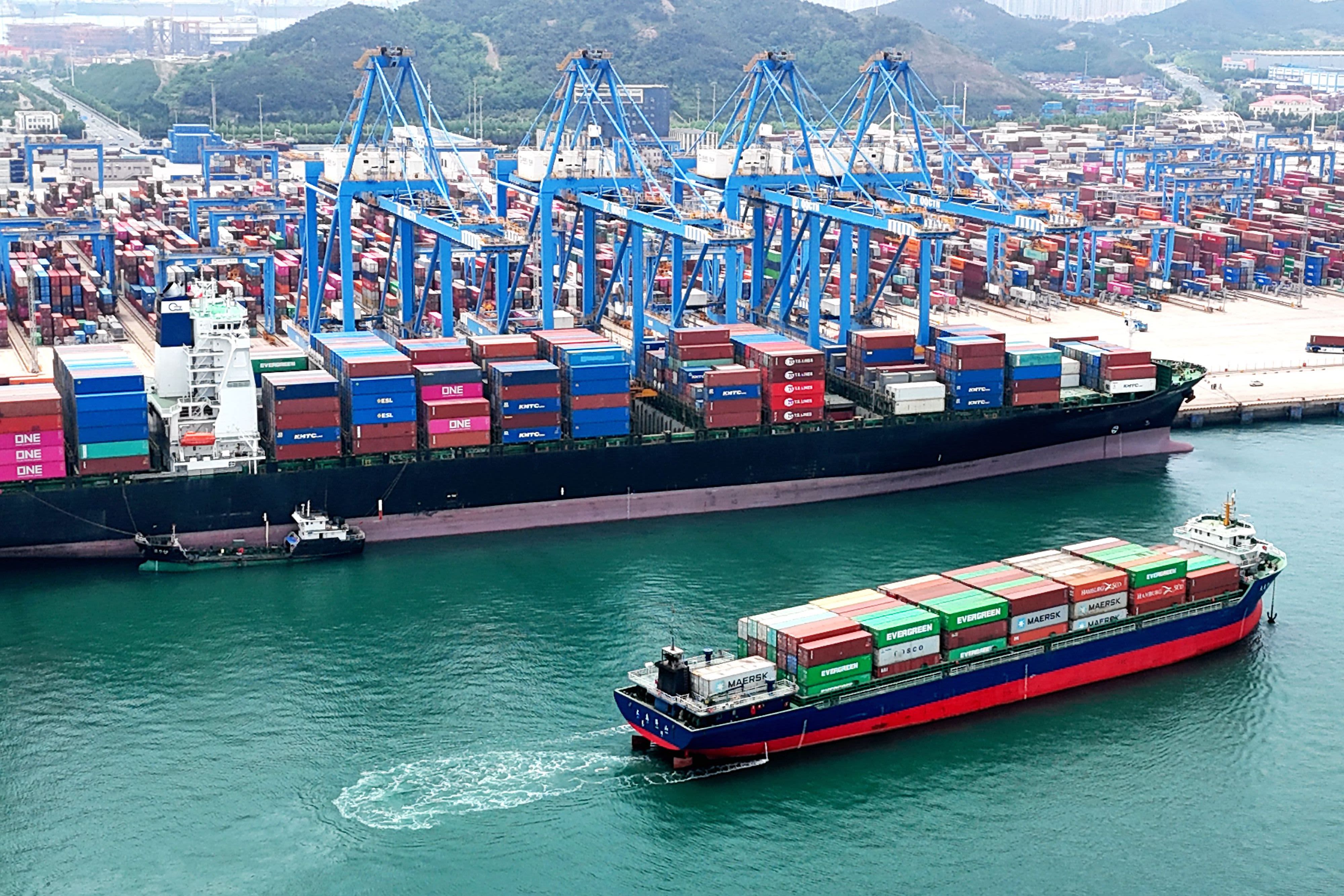China’s October Exports Unexpectedly Slip with US Shipments Plunging 25%
China’s October Exports Unexpectedly Slip with US Shipments Plunging 25%
By
Junia Wells
Last updated:
November 7, 2025
First Published:
November 7, 2025

Getty Images
A Sudden Shift in Export Momentum
China’s goods exports fell by 1.1 % year-on-year in October, marking the first decline since March 2024 and reversing a robust 8.3 % rise registered in September. Analysts had expected growth of around +3 %, underscoring how the drop caught markets off guard.
At the same time, imports rose by only 1.0 %, well below the forecast of 3.2 % growth, and down significantly from September’s +7.4 % jump — highlighting weakness not just in exports but also in domestic demand.
The U.S. Market: A Major Drag
Shipments from China to the U.S. dropped approximately 25 % in October compared with the same month last year, marking the seventh consecutive month of double-digit decline in that bilateral flow. The U.S. market, which once absorbed over $400 billion in Chinese goods annually, is shrinking fast as companies re-route supply chains and tariffs bite.
Economists estimate the loss of U.S. demand shaved about 2 percentage points off China’s export growth, equivalent to nearly 0.3 % of GDP in drag for the month.
What’s Driving the Slowdown?
Several intertwined factors help explain the downturn:
- Front-loading fatigue: Chinese firms rushed to ship goods ahead of tariff escalations earlier this year. With that inventory now exhausted, the calendar effect is fading.
- High base effect: In October 2024 exports surged at one of the fastest paces in recent years — making this year’s comparison difficult.
- Weak global demand: As export orders decline, manufacturing indicators show that factory activity is suffering. In October the manufacturing PMI slipped to 49.0, its seventh straight month below the 50-growth threshold.
- Domestic headwinds: Slumps in China’s property sector, weak job growth and consumer-spending softness are damping import growth and narrowing the cushion provided by domestic demand.
- Geopolitical and trade policy pressures: Elevated tariffs, export-control risks and uncertainty over trade relations are adding risk premiums, discouraging some foreign buyers and complicating logistics.
How China Is Diversifying Its Trade Links
While the U.S. market falters, China is shifting its focus:
- Exports to Southeast Asia posted gains of +8.9 % in October, while shipments to the European Union edged up just +0.9 % — both far weaker than earlier in the year.
- Exports to Russia plunged 22 % in yuan terms in October alone, the steepest year-on-year drop in eight months, underscoring that even alternate markets are under strain.
- On the year-to-date (first 10 months), the trade surplus reached over US$900 billion, up more than 20 % from a year earlier. But much of that reflects rerouting and pricing effects, not necessarily stronger underlying demand.
Implications for China’s Economy & Policy Response
The export slip comes at a tricky moment for China’s growth model. With external demand softening and domestic consumption still sluggish, policymakers face a balancing act: stimulate the economy enough to hit growth targets, but avoid reigniting asset bubbles or over-capacity.
Forecasts from some institutions project China’s real GDP growth at 4.5 % in 2026, with export growth of perhaps 3-5 % annually under modest stimulus scenarios. With exports losing steam, the government is increasingly leaning on domestic demand — boosting infrastructure, easing property policy and encouraging household consumption.
The weakening export outlook may prompt more aggressive fiscal or monetary support in early 2026 — yet structural reforms (such as improving household income and shifting away from investment-led growth) remain critical if China is to reduce its dependence on global trade.
What to Watch Next
- Can China sustain export growth in Q4, or will the slowdown deepen?
- Will global buyer sentiment improve if trade tensions ease or if U.S. tariffs are rolled back?
- How fast can China shift from export-reliant growth to consumption-and-services driven expansion?
- Will manufacturing continue to contract, or will relief in global supply chains help stabilise new orders?
The October export data is a clear signal: the era of rapid trade-driven growth is under strain, and China’s ability to adapt matters — not just for its own economy, but for global markets tied into its production and demand cycles.
Popular articles
Subscribe to unlock premium content
The Rise of Silent Walking Tours in Historic Cities

The Rise of Ultra-Niche Cooking Classes Focused on Historical or Regional Recipes

The Rise of One-Person Dining Experiences for Ultra-Introverts in Major Cities

The Rise of Silent Walking Tours in Historic Cities

The Rise of Ultra-Niche Cooking Classes Focused on Historical or Regional Recipes

The Rise of Silent Walking Tours in Historic Cities









